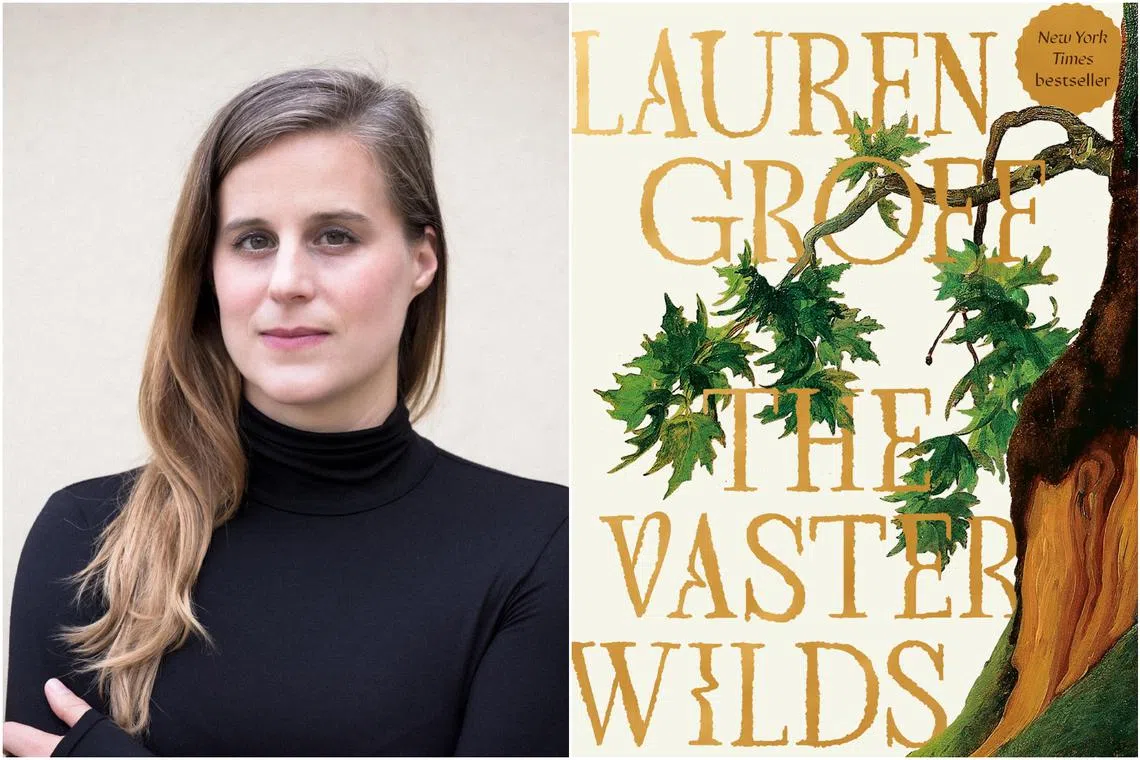Book Review: The Vaster Wilds is a gripping tale of survival that gets lost in the woods
Sign up now: Get ST's newsletters delivered to your inbox

Lauren Groff sets her protagonist on a gruelling journey through the forests of embryonic America in The Vaster Wilds.
PHOTOS: ELI SINKUS, PENGUIN GROUP
Follow topic:
The Vaster Wilds
By Lauren Groff amzn.to/3S2KFQt
Fiction/Riverhead Books/Paperback/272 pages/$26.48/Amazon SG (
3 stars
Across the vast and unforgiving wilderness of 1609 America, a girl flees for her life. A runaway servant from the Jamestown settlement, she is armed with nothing but a few scraps of clothing, a knife and a pewter cup. She sets a course for north, seeking “men of a similar god”.
How she will make it or what she will do once there, she does not know. For now, only one thing matters: survival.
Lauren Groff’s heart-pounding latest book, The Vaster Wilds, is a gruelling exploration of what it means to survive — both in the known world and out of it.
The award-winning author is no stranger to crafting spirited female characters lost in strange places, but this time, she has set herself — and her protagonist — an even more daunting challenge.
Barely any lines of dialogue feature in the novel, which hinges almost entirely on a single, solitary character moving in isolation.
For a one-woman show that could so easily veer into tedium, Groff keeps her narration tight and immersive. Out of the grisly minutiae of forest life, her deliciously tactile prose pulls courage, hope, and tenderness.
Readers creep gingerly alongside the girl, into the mucky hollow of trees or caves for shelter. They savour every “sweet and buttery” mouthful of foraged food, and let the sharp relief of fresh water wash through them, “like the tip of a knife”. At times, the detail is revolting. There are coverlets “crawling with lice”, sleeves “blackened with armpit stink” and pools stained with the “slick of filth and oil”.
Life in the forest is rendered so vividly that each grim step the girl takes seems to crunch and pop off the page. Occasionally, the threat of a ferocious predator – a wolf at night, a nearby bear – creeps past. Other times, Groff teases the prospect of a thrilling cat-and-mouse chase by introducing potential huntsmen. Disappointingly, the stakes are never raised for long.
The dangers that do strike are revisited in flashbacks. Snippets of the girl’s past life in England reveal a band of unsavoury characters – the cruel minister, his repressed wife, her violent son and her innocent toddler – who, though one-dimensional for the most part, starkly illuminate the full horrors of the world she leaves behind.
Gradually, the forest – indifferent, merciless, yet unfettered – feels less brutal when set against the vicious savagery of civilised society. “Even a good man was more deadly than the worst of bears,” thinks the girl.
When the narrative crosses back into the New World, native tribesmen lurk in the shadows, ominous in a way that feels almost stereotypical.
Some attempt is made at reckoning with these pre-conceived notions: At one point, the girl wonders if her own people are not equally murderous. It is more of a passing thought than incisive commentary, though, and remains unexplored.
Other themes are threaded through her odyssey with greater success: religious faith flares and sputters; the trials of womanhood unspool with the girl’s memories.
Onward she flies, deeper and deeper into the forest, until at last she reaches a final stop.
There is little of the deliverance to be found in more hopeful works of survival fiction like The Girl Who Loved Tom Gordon or Robinson Crusoe, which inspired this book. After all the endurance the novel has demanded of its protagonist as well as the reader, its end, inevitable as it is, feels almost like a letdown.
There are final lessons, to be sure, epiphanies and visions that provide an illusory sort of closure. But it is an anticlimactic shame that the reader should leave the heroine – whose struggle had hitherto pushed the bounds of female agency to exhilarating limits – here, once again at the mercy of forces beyond her control.
If you like this, read: The Girl Who Loved Tom Gordon by Stephen King (Hodder & Stoughton, 2011, $17.07, Amazon SG, go to amzn.to/3TVRftg
This article contains affiliate links. If you buy through these links, we may earn a small commission.


